As much as I enjoy pulling up a chair and watching chicks hatch from eggs in an incubator in my kitchen, there is no question that allowing a hen to hatch eggs is significantly easier than monitoring and managing the process in an electric box. Mother hens handle all of the hatching details from humidity to temperature and egg-turning to raising the chicks. Managing mother hens can be done the easy way…or the hard way. In this article, I’ll discuss the hard way and the easy way to care for broody chickens to facilitate egg-hatching, but first, let’s discuss broody basics.
WHAT IS A BROODY HEN?
A hen that is committed to hatching chicks is known as a broody. The state of being broody is controlled by instinct, hormones and lighting conditions. Left to her own devices, a broody will lay a clutch of eggs, then stop egg-laying and sit on them for 21 days (more or less) until they hatch.
Not every hen will become broody in her lifetime, but those that do are fiercely protective of their nests. Some breeds are more inclined to brood than others; in particular, Silkies, Cochins and Australorps are perpetual contenders for the Broody Mother of the Year Award.
HOW TO IDENTIFY A BROODY HEN
In general, a broody prefers a dark, private, comfortable location in which to set. Her chosen spot can range from a nest box inside the coop to a hidden location away from the coop. She plucks her own breast feathers to expose the warmth and moisture of her skin directly to the eggs (hence the expression “to feather one’s nest”).
The sweetest hen in a flock is barely recognizable when she is broody. When she is approached, she growls, shrieks, puffs out her feathers and pecks at the intruder, trying to be as intimidating as possible in defense of her eggs. She sits in the nest all day and night, leaving it briefly once or twice a day to eat, drink and relieve herself. Broody poop is distinctive, ginormous and the most foul smelling deposit possible.
THE QUITTER and the HOMICIDAL HEN
Just because a hen is broody does not mean that she is going to be a successful or dedicated hatching hen. Some abandon the eggs after a number of days or weeks, or worse- they kill the chicks that hatch. Unfortunately, the only way to know whether a hen will be a good mother is by being a good mother. There is no test or method for predicting whether a hen will quit setting before the eggs hatch or become homicidal until it happens.
Rachel, my Bantam Cochin Frizzle on hatch day. Unfortunately, she is a homicidal broody.
Before purchasing expensive hatching eggs for a broody to hatch, it is wise to put her through the paces with ordinary hatching eggs. I have learned the hard way never to give an unreliable broody a second chance. If she abandoned the nest or harmed chicks once, she will do it again. Past performance is the best predictor of future behavior. Have a back-up plan in anticipation of a quitter even with the less valuable eggs. Keeping an incubator on-hand in the event a broody abandons the eggs can be life-saving.
HOW TO STOP BROODINESS
If there are no fertile eggs available or the broody sits on an empty nest, broodiness can continue long beyond three weeks, resulting in negative health consequences for her and problems for other hens. A broody eats, drinks and eliminates waste once or twice a day at most. She consumes 80% less feed per day than usual. Over time, her comb becomes pale, her feathers lose sheen and she loses a noticeable amount of weight. This drastic change normal routine is tolerable in 21 day stints but protracted stints are unhealthy for her. When a broody hen is not needed, the behavior should be discouraged by “breaking” her. This article addresses how to break up a broody hen.
IS IT POSSIBLE TO MAKE A HEN BROODY?
Nope. Either a hen is broody or she is not- one cannot make a hen broody. However, a hen that is already in the mood to brood may be encouraged to set if she sees a nest full of eggs or another hen brooding as the state seems to be contagious.
It doubles as a hospital ward for sick or injured birds.
A BROODY HEN’S NEEDS: MATERNITY WARD vs. COOP NEST BOX
MATERNITY WARD SPECIFICATIONS (The Easy Way)
Ideally, every broody will have her own private, quiet, predator-proof space apart from the flock. Serious breeders have dedicated coops or broody pens for the purpose of housing broodies. A broody does not need much to do her thing: a dark, cozy spot for the eggs, a food and water station and a location in which to relieve herself. After three weeks, the chicks should hatch and she will keep them warm, show them where the food and water is and protect them from intruders.
The bottom of the nest should be soft so to protect the eggs. The weight of the hen, the shifting of position and jostling of eggs on her way into and out of the nest for 21 days can cause eggs to crack and ultimately kill any live embryo inside. To limit the impact to the eggs, I recommend nest box pads and liners either alone or with chopped straw or shavings on top. While straw isn’t necessary with nest pads, broodies like to arrange their nests and straw gives them the opportunity to work their nesting instinct.
FOOD & WATER
A broody consumes 80% less feed than usual and stops laying eggs while setting. Since layer feed has calcium added for eggshell production, a hen doesn’t need layer feed while brooding. I give my broodies chick starter ration since that’s the chicks will eat after they hatch; it’s higher in protein and lower in calcium than layer feed, which works well for broodies since they’re not laying eggs anyway. Scratch can also be offered to the broody hen as the high carbohydrate content will provide extra calories during her three week crash diet. Keep the food and water close to the nest to ensure that less adventurous broodies avail themselves of at least one meal a day. Fresh, cool water is critical to the health of a broody hen and should be made available at all times. A dehydrated hen can die very quickly.
HOW MANY EGGS?
A hen can manage to cover and keep warm approximately 12 eggs proportionate to her size, meaning: if she is a bantam, it is reasonable to expect that she can care for 12 bantam sized eggs, fewer if the eggs are from a larger hen. If the broody is a large fowl breed, she can handle 12-15 eggs of the size she would ordinarily lay, more if they are bantam eggs. Much more about acquisition of and handling of the hatching eggs, here.
MOVING THE BROODY
A broody hen doesn’t usually have the good sense to make a reservation for a room in the maternity ward, she usually parks herself inside a coop nest box, which means that she must be moved to the maternity ward, which can be tricky. Some broodies are more attached to their chosen location than others and will protest mightily while trying to return to it if moved. Moving a broody hen is best done at night when she is less likely to be upset by the change of scenery. The feed, water and makeshift run should be in place before the move is made.
CANDLING
Candling is the term used for shining a light through an eggshell to determine whether an embryo is developing or not. The egg candler used in the photo below is a Brinsea Ovascope. Eggs without developing embryos or with embryos that have died should be removed from the hen’s nest. Candling eggs should be done after dark if at all, so as to limit the stress to the broody.
When I candle broody eggs, I do it twice at most, at day 10 and 17. By day 10 any egg that has not begun to develop will be obvious and should be removed. After day 18 the embryo begins to assume the hatching position and should no longer be moved, so I like to candle on day 17 at the latest. The photo below shows what an embryo three days away from hatching looks like from the inside (left) and when candling from the outside (right).
Contrary to popular belief, a hen does not necessarily kick bad eggs out of the nest. Sometimes eggs found outside the nest are viable and sometimes she continues to sit on rotten eggs until the bitter end. I wish I had a nickel for every rotten egg I have discovered in the nest after a hen has left it to care for her brood. I have also rescued more than one developing egg that a broody has kicked out of the nest. When finding an egg outside the nest, it should be candled it to assess its viability and the stage of development and if it’s on track, put back under the broody, under a different broody hen or in an incubator.
I highly recommend performing the sniff test on hatching eggs whenever possible even if it’s just trying to get a whiff while passing by the broody’s nest. Rotten eggs can often be detected from a considerable distance and must be removed from the clutch so as not to jeopardize the entire hatch. More on rotten eggs, here.
MAINTENANCE
Keep the nest clean and dry. Bacteria plus eggs=dead embryos and rotten eggs. Accidents do happen from broken eggs to poop and soiled nests should be cleaned upon discovery to limit the exposure of bacteria to the eggs. Broodies leave the nest at approximately the same time daily to eat/drink/poop/dust bathe, which is a good time to check and change the bedding.
Nine out of ten times I miss a broody taking her daily break, but I always watch for broody poop in the yard or coop to be sure she is eating. Some broodies must be physically removed from the nest in order to ensure they are getting the minimum daily intake of water and food. A broody who does not poop has not eaten, which is a hazard to her health. Keep the feed and water near the nest so she doesn’t have far to travel to reach it. It is normal for a hen not to leave the nest the last three days of the 21 day setting period, so don’t disturb her at that point.
BROODER ON STANDBY
Pay attention to the expected date of hatch and begin listening for cheeping chicks any time after day 19. Chicks will begin cheeping inside the egg prior to hatching and at this point, it’s prudent to watch the hen for hostility or rejection. Sometime it is necessary to rescue a chick from a broody hen either because the hen attacks, rejects, or abandons them. I always have a brooder set-up ready on hatch day in the event of rejection by the mother hen.
FEEDING MOTHER HEN & CHICKS
By providing starter feed in the maternity ward for the broody there are no special preparations required for feeding the chicks. The mother hen will bring them to the feed and water and teach them to eat and drink.
Chicks do not need grit to digest most commercial starter feeds. Starter feed is designed to be digested by saliva with no need for further grinding with grit in the gizzard. Any time chicks are given treats or fibrous foods or whole grain feed, they should be provided with grit, however. Don’t rush the treats/extras/snacks with chicks; treats interfere with the balanced nutrition contained in starter.
The hen will need layer feed approximately a month after hatching since she may begin to lay eggs any time after 5 weeks. It is at that point that most broodies begin to distance themselves from her babies, although there are exceptions. (see Freida below with chicks that are bigger than she and still clinging close to her side)
I see only two disadvantages to a broody pen: first, there isn’t much space to exercise or dust-bathe unless the broody pen is huge and second, both the broody and the chicks must be integrated into the flock when the chicks are old enough to hold their own with bigger birds, which is more challenging than allowing the broody to raise the chicks from day one within the flock.
TIPS FOR BROODIES SETTING INSIDE THE COOP
(The Hard Way)
Ideally a broody hen will have a private space in which to hatch eggs in peace, but practically, that is not always possible and often broodies hatch eggs in the coop nest boxes. The challenges of caring for a coop broody (CB) are significant. Laying hens still need to use the coop nest boxes regardless of the presence of a CB and will usually join her in it. This can lead to fighting, injuries and jockeying for position that endangers the eggs’ integrity. Certain accommodations must be made in order to maximize the potential for a successful hatch in the chicken coop nest boxes.
LAYING HENS
CBs occupy nest boxes that laying hens need to use. Laying hens will frequently join a CB in the nest box, deposit her egg then go on her way, but sometimes a laying hen will bully a CB off her nest eggs. The CB may or may not return to the hatching eggs. A less assertive laying hen may decide to lay her eggs in a less hostile environment outside the coop, sending the chicken-keeper on a daily Easter egg hunt. Neither situation is desirable. It can help to add temporary nest boxes throughout the coop and run for laying hens to use while the usual nests are occupado. A 5 gallon bucket, a shallow cardboard box or an empty pet carrier can all serve as temporary nest boxes.
Another problem unique to CBs is disappearing eggs. Other hens may abscond with the hatching eggs by tucking them underneath their wings, moving them to another location, or eating them. Gross, but true. There’s not much that can be done about this issue except to remove the CB with her remaining eggs to a maternity ward.
MARK THE EGGS
A CB’s hatching eggs should be marked clearly with a permanent marker or pencil and re-marked if the marks wear off. Marking the eggs makes it clear at a glance which eggs in the nest are hatching eggs and which were recently laid by other hens. Eggs should be collected from the coop at least once a day to remove freshly laid eggs. Check underneath a CB daily for freshly laid eggs. If she is especially ornery, collect them after dark using a flashlight.
NEST HEIGHT
If the CB’s nest is more than 12 inches off the ground, the broody should be moved to a lower, temporary nest inside the coop no later than day 18 (3 days before hatch) for the safety of the chicks.
FEEDING CB & CHICKS
The same feeding guidelines as discussed above apply to CBs and their chicks: keep starter feed nearby with clean, fresh, cool water always available. The laying hens in the coop can eat chick starter or chick starter/grower if necessary, but oyster shell will need to be supplied in a separate hopper. Chicks should never be given layer feed because the added calcium can cause kidney damage, gout and other health problems later in life.
POST-HATCH
The best part of having a broody hen is watching her raise the chicks. She will teach them to eat and drink and should keep them safe from harm. The behavior of other hens towards the CB and her new chicks should be monitored carefully for the first few days. At any sign of hostility from flock members or if it becomes apparent that the CB is not adequately protecting the chicks, they should all be moved to an enclosure.
CO-PARENTING
It is not uncommon for two broodies to sit on one clutch of eggs or for two broodies to raise chicks together.
BACK ON TRACK: THE BROODY MOLT
While the chicks are growing, a broody hen will work to rebuild her pre-broody body. She needs to replenish her fat and calcium stores and will likely shed quite a lot of feathers. This feather loss that I call a “broody molt” is the result of malnutrition during the setting period and the return to a normal diet afterwards. The higher protein content in starter feed will help her to regenerate feathers, which is a protein-intensive process.
This was my first experience with a broody molt. I was pretty sure Freida was going into the pillow-making business until I realized the cause of the feather loss was the drastic shift in diet post-hatch.
A broody hen will generally begin to distance herself from her brood approximately 5 or 6 weeks after hatching. She can begin egg-laying any time thereafter.
RANDOM RELEVANT INFO
While some hens will brood several times per year if permitted, serial-brooding should be discouraged due to the physical toll it takes on a hen. It is possible for a pullet to go broody before she ever lays her first egg.
To the extent possible, leave broodies alone. One never knows when she will quit the gig mid-stream when interrupted.
NESTING BOX HERBS
While I am a proponent of herbs to spruce up the coop and nest boxes, I do not recommend putting fresh herbs inside a broody’s nest. The warmth and humidity generated by a broody can cause the herbs to decay and get moldy, setting up an environment ripe for bacterial growth and embryo death. Stick with dried herbs, if any.
Kathy Shea Mormino
Affectionately known internationally as The Chicken Chick®, Kathy Shea Mormino shares a fun-loving, informative style to raising backyard chickens. …Read on


shop my SPONSORS
As much as I enjoy pulling up a chair and watching chicks hatch from eggs in an incubator in my kitchen, there is no question that allowing a hen to hatch eggs is significantly easier than monitoring and managing the process in an electric box. Mother hens handle all of the hatching details from humidity to temperature and egg-turning to raising the chicks. Managing mother hens can be done the easy way…or the hard way. In this article, I’ll discuss the hard way and the easy way to care for broody chickens to facilitate egg-hatching, but first, let’s discuss broody basics.
WHAT IS A BROODY HEN?
A hen that is committed to hatching chicks is known as a broody. The state of being broody is controlled by instinct, hormones and lighting conditions. Left to her own devices, a broody will lay a clutch of eggs, then stop egg-laying and sit on them for 21 days (more or less) until they hatch.
Not every hen will become broody in her lifetime, but those that do are fiercely protective of their nests. Some breeds are more inclined to brood than others; in particular, Silkies, Cochins and Australorps are perpetual contenders for the Broody Mother of the Year Award.
HOW TO IDENTIFY A BROODY HEN
In general, a broody prefers a dark, private, comfortable location in which to set. Her chosen spot can range from a nest box inside the coop to a hidden location away from the coop. She plucks her own breast feathers to expose the warmth and moisture of her skin directly to the eggs (hence the expression “to feather one’s nest”).
The sweetest hen in a flock is barely recognizable when she is broody. When she is approached, she growls, shrieks, puffs out her feathers and pecks at the intruder, trying to be as intimidating as possible in defense of her eggs. She sits in the nest all day and night, leaving it briefly once or twice a day to eat, drink and relieve herself. Broody poop is distinctive, ginormous and the most foul smelling deposit possible.
THE QUITTER and the HOMICIDAL HEN
Just because a hen is broody does not mean that she is going to be a successful or dedicated hatching hen. Some abandon the eggs after a number of days or weeks, or worse- they kill the chicks that hatch. Unfortunately, the only way to know whether a hen will be a good mother is by being a good mother. There is no test or method for predicting whether a hen will quit setting before the eggs hatch or become homicidal until it happens.
Rachel, my Bantam Cochin Frizzle on hatch day. Unfortunately, she is a homicidal broody.
Before purchasing expensive hatching eggs for a broody to hatch, it is wise to put her through the paces with ordinary hatching eggs. I have learned the hard way never to give an unreliable broody a second chance. If she abandoned the nest or harmed chicks once, she will do it again. Past performance is the best predictor of future behavior. Have a back-up plan in anticipation of a quitter even with the less valuable eggs. Keeping an incubator on-hand in the event a broody abandons the eggs can be life-saving.
HOW TO STOP BROODINESS
If there are no fertile eggs available or the broody sits on an empty nest, broodiness can continue long beyond three weeks, resulting in negative health consequences for her and problems for other hens. A broody eats, drinks and eliminates waste once or twice a day at most. She consumes 80% less feed per day than usual. Over time, her comb becomes pale, her feathers lose sheen and she loses a noticeable amount of weight. This drastic change normal routine is tolerable in 21 day stints but protracted stints are unhealthy for her. When a broody hen is not needed, the behavior should be discouraged by “breaking” her. This article addresses how to break up a broody hen.
IS IT POSSIBLE TO MAKE A HEN BROODY?
Nope. Either a hen is broody or she is not- one cannot make a hen broody. However, a hen that is already in the mood to brood may be encouraged to set if she sees a nest full of eggs or another hen brooding as the state seems to be contagious.
It doubles as a hospital ward for sick or injured birds.
A BROODY HEN’S NEEDS: MATERNITY WARD vs. COOP NEST BOX
MATERNITY WARD SPECIFICATIONS (The Easy Way)
Ideally, every broody will have her own private, quiet, predator-proof space apart from the flock. Serious breeders have dedicated coops or broody pens for the purpose of housing broodies. A broody does not need much to do her thing: a dark, cozy spot for the eggs, a food and water station and a location in which to relieve herself. After three weeks, the chicks should hatch and she will keep them warm, show them where the food and water is and protect them from intruders.
The bottom of the nest should be soft so to protect the eggs. The weight of the hen, the shifting of position and jostling of eggs on her way into and out of the nest for 21 days can cause eggs to crack and ultimately kill any live embryo inside. To limit the impact to the eggs, I recommend nest box pads and liners either alone or with chopped straw or shavings on top. While straw isn’t necessary with nest pads, broodies like to arrange their nests and straw gives them the opportunity to work their nesting instinct.
FOOD & WATER
A broody consumes 80% less feed than usual and stops laying eggs while setting. Since layer feed has calcium added for eggshell production, a hen doesn’t need layer feed while brooding. I give my broodies chick starter ration since that’s the chicks will eat after they hatch; it’s higher in protein and lower in calcium than layer feed, which works well for broodies since they’re not laying eggs anyway. Scratch can also be offered to the broody hen as the high carbohydrate content will provide extra calories during her three week crash diet. Keep the food and water close to the nest to ensure that less adventurous broodies avail themselves of at least one meal a day. Fresh, cool water is critical to the health of a broody hen and should be made available at all times. A dehydrated hen can die very quickly.
HOW MANY EGGS?
A hen can manage to cover and keep warm approximately 12 eggs proportionate to her size, meaning: if she is a bantam, it is reasonable to expect that she can care for 12 bantam sized eggs, fewer if the eggs are from a larger hen. If the broody is a large fowl breed, she can handle 12-15 eggs of the size she would ordinarily lay, more if they are bantam eggs. Much more about acquisition of and handling of the hatching eggs, here.
MOVING THE BROODY
A broody hen doesn’t usually have the good sense to make a reservation for a room in the maternity ward, she usually parks herself inside a coop nest box, which means that she must be moved to the maternity ward, which can be tricky. Some broodies are more attached to their chosen location than others and will protest mightily while trying to return to it if moved. Moving a broody hen is best done at night when she is less likely to be upset by the change of scenery. The feed, water and makeshift run should be in place before the move is made.
CANDLING
Candling is the term used for shining a light through an eggshell to determine whether an embryo is developing or not. The egg candler used in the photo below is a Brinsea Ovascope. Eggs without developing embryos or with embryos that have died should be removed from the hen’s nest. Candling eggs should be done after dark if at all, so as to limit the stress to the broody.
When I candle broody eggs, I do it twice at most, at day 10 and 17. By day 10 any egg that has not begun to develop will be obvious and should be removed. After day 18 the embryo begins to assume the hatching position and should no longer be moved, so I like to candle on day 17 at the latest. The photo below shows what an embryo three days away from hatching looks like from the inside (left) and when candling from the outside (right).
Contrary to popular belief, a hen does not necessarily kick bad eggs out of the nest. Sometimes eggs found outside the nest are viable and sometimes she continues to sit on rotten eggs until the bitter end. I wish I had a nickel for every rotten egg I have discovered in the nest after a hen has left it to care for her brood. I have also rescued more than one developing egg that a broody has kicked out of the nest. When finding an egg outside the nest, it should be candled it to assess its viability and the stage of development and if it’s on track, put back under the broody, under a different broody hen or in an incubator.
I highly recommend performing the sniff test on hatching eggs whenever possible even if it’s just trying to get a whiff while passing by the broody’s nest. Rotten eggs can often be detected from a considerable distance and must be removed from the clutch so as not to jeopardize the entire hatch. More on rotten eggs, here.
MAINTENANCE
Keep the nest clean and dry. Bacteria plus eggs=dead embryos and rotten eggs. Accidents do happen from broken eggs to poop and soiled nests should be cleaned upon discovery to limit the exposure of bacteria to the eggs. Broodies leave the nest at approximately the same time daily to eat/drink/poop/dust bathe, which is a good time to check and change the bedding.
Nine out of ten times I miss a broody taking her daily break, but I always watch for broody poop in the yard or coop to be sure she is eating. Some broodies must be physically removed from the nest in order to ensure they are getting the minimum daily intake of water and food. A broody who does not poop has not eaten, which is a hazard to her health. Keep the feed and water near the nest so she doesn’t have far to travel to reach it. It is normal for a hen not to leave the nest the last three days of the 21 day setting period, so don’t disturb her at that point.
BROODER ON STANDBY
Pay attention to the expected date of hatch and begin listening for cheeping chicks any time after day 19. Chicks will begin cheeping inside the egg prior to hatching and at this point, it’s prudent to watch the hen for hostility or rejection. Sometime it is necessary to rescue a chick from a broody hen either because the hen attacks, rejects, or abandons them. I always have a brooder set-up ready on hatch day in the event of rejection by the mother hen.
FEEDING MOTHER HEN & CHICKS
By providing starter feed in the maternity ward for the broody there are no special preparations required for feeding the chicks. The mother hen will bring them to the feed and water and teach them to eat and drink.
Chicks do not need grit to digest most commercial starter feeds. Starter feed is designed to be digested by saliva with no need for further grinding with grit in the gizzard. Any time chicks are given treats or fibrous foods or whole grain feed, they should be provided with grit, however. Don’t rush the treats/extras/snacks with chicks; treats interfere with the balanced nutrition contained in starter.
The hen will need layer feed approximately a month after hatching since she may begin to lay eggs any time after 5 weeks. It is at that point that most broodies begin to distance themselves from her babies, although there are exceptions. (see Freida below with chicks that are bigger than she and still clinging close to her side)
I see only two disadvantages to a broody pen: first, there isn’t much space to exercise or dust-bathe unless the broody pen is huge and second, both the broody and the chicks must be integrated into the flock when the chicks are old enough to hold their own with bigger birds, which is more challenging than allowing the broody to raise the chicks from day one within the flock.
TIPS FOR BROODIES SETTING INSIDE THE COOP
(The Hard Way)
Ideally a broody hen will have a private space in which to hatch eggs in peace, but practically, that is not always possible and often broodies hatch eggs in the coop nest boxes. The challenges of caring for a coop broody (CB) are significant. Laying hens still need to use the coop nest boxes regardless of the presence of a CB and will usually join her in it. This can lead to fighting, injuries and jockeying for position that endangers the eggs’ integrity. Certain accommodations must be made in order to maximize the potential for a successful hatch in the chicken coop nest boxes.
LAYING HENS
CBs occupy nest boxes that laying hens need to use. Laying hens will frequently join a CB in the nest box, deposit her egg then go on her way, but sometimes a laying hen will bully a CB off her nest eggs. The CB may or may not return to the hatching eggs. A less assertive laying hen may decide to lay her eggs in a less hostile environment outside the coop, sending the chicken-keeper on a daily Easter egg hunt. Neither situation is desirable. It can help to add temporary nest boxes throughout the coop and run for laying hens to use while the usual nests are occupado. A 5 gallon bucket, a shallow cardboard box or an empty pet carrier can all serve as temporary nest boxes.
Another problem unique to CBs is disappearing eggs. Other hens may abscond with the hatching eggs by tucking them underneath their wings, moving them to another location, or eating them. Gross, but true. There’s not much that can be done about this issue except to remove the CB with her remaining eggs to a maternity ward.
MARK THE EGGS
A CB’s hatching eggs should be marked clearly with a permanent marker or pencil and re-marked if the marks wear off. Marking the eggs makes it clear at a glance which eggs in the nest are hatching eggs and which were recently laid by other hens. Eggs should be collected from the coop at least once a day to remove freshly laid eggs. Check underneath a CB daily for freshly laid eggs. If she is especially ornery, collect them after dark using a flashlight.
NEST HEIGHT
If the CB’s nest is more than 12 inches off the ground, the broody should be moved to a lower, temporary nest inside the coop no later than day 18 (3 days before hatch) for the safety of the chicks.
FEEDING CB & CHICKS
The same feeding guidelines as discussed above apply to CBs and their chicks: keep starter feed nearby with clean, fresh, cool water always available. The laying hens in the coop can eat chick starter or chick starter/grower if necessary, but oyster shell will need to be supplied in a separate hopper. Chicks should never be given layer feed because the added calcium can cause kidney damage, gout and other health problems later in life.
POST-HATCH
The best part of having a broody hen is watching her raise the chicks. She will teach them to eat and drink and should keep them safe from harm. The behavior of other hens towards the CB and her new chicks should be monitored carefully for the first few days. At any sign of hostility from flock members or if it becomes apparent that the CB is not adequately protecting the chicks, they should all be moved to an enclosure.
CO-PARENTING
It is not uncommon for two broodies to sit on one clutch of eggs or for two broodies to raise chicks together.
BACK ON TRACK: THE BROODY MOLT
While the chicks are growing, a broody hen will work to rebuild her pre-broody body. She needs to replenish her fat and calcium stores and will likely shed quite a lot of feathers. This feather loss that I call a “broody molt” is the result of malnutrition during the setting period and the return to a normal diet afterwards. The higher protein content in starter feed will help her to regenerate feathers, which is a protein-intensive process.
This was my first experience with a broody molt. I was pretty sure Freida was going into the pillow-making business until I realized the cause of the feather loss was the drastic shift in diet post-hatch.
A broody hen will generally begin to distance herself from her brood approximately 5 or 6 weeks after hatching. She can begin egg-laying any time thereafter.
RANDOM RELEVANT INFO
While some hens will brood several times per year if permitted, serial-brooding should be discouraged due to the physical toll it takes on a hen. It is possible for a pullet to go broody before she ever lays her first egg.
To the extent possible, leave broodies alone. One never knows when she will quit the gig mid-stream when interrupted.
NESTING BOX HERBS
While I am a proponent of herbs to spruce up the coop and nest boxes, I do not recommend putting fresh herbs inside a broody’s nest. The warmth and humidity generated by a broody can cause the herbs to decay and get moldy, setting up an environment ripe for bacterial growth and embryo death. Stick with dried herbs, if any.



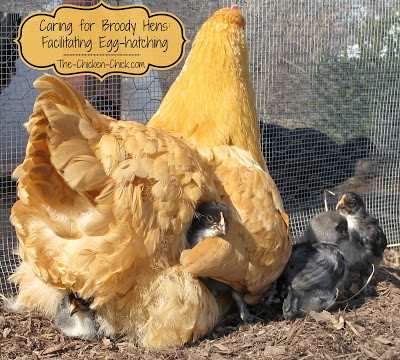
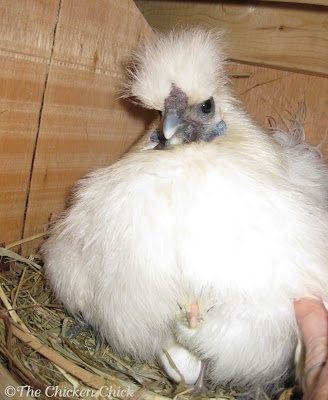
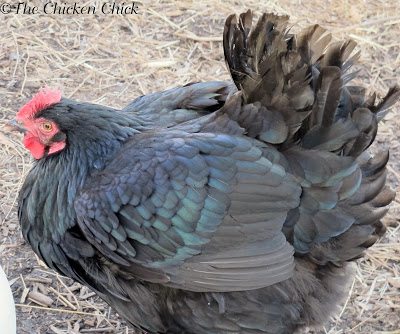
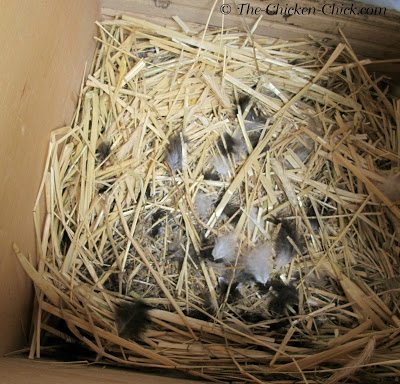
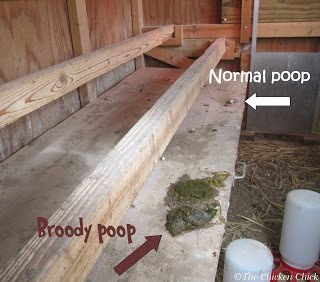
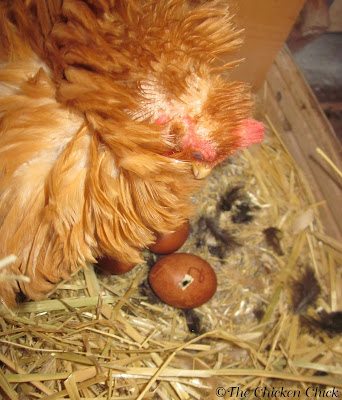
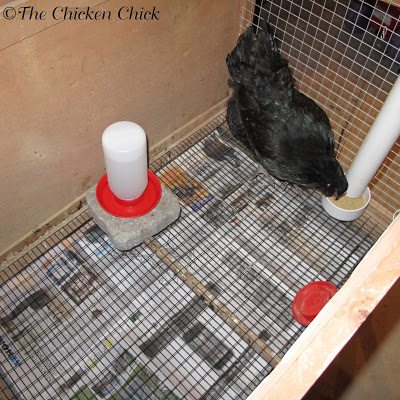
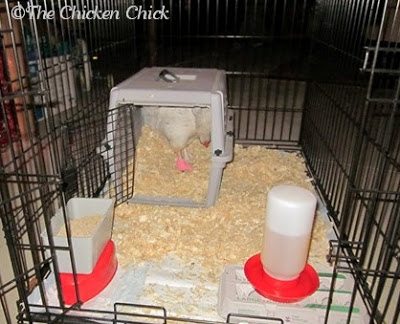
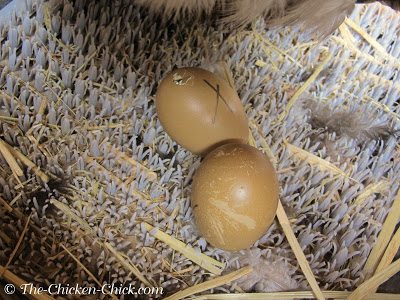

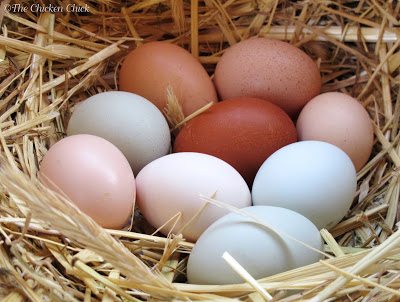
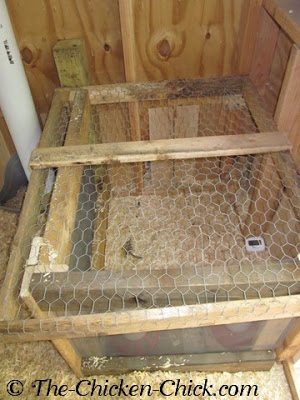
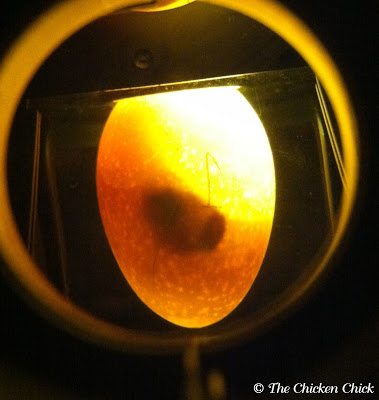

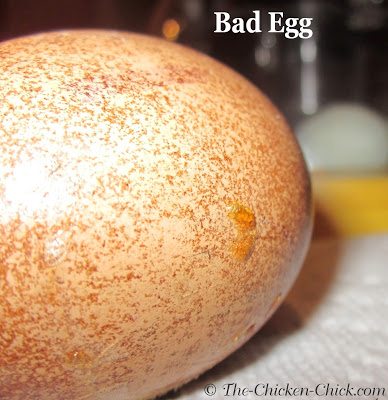

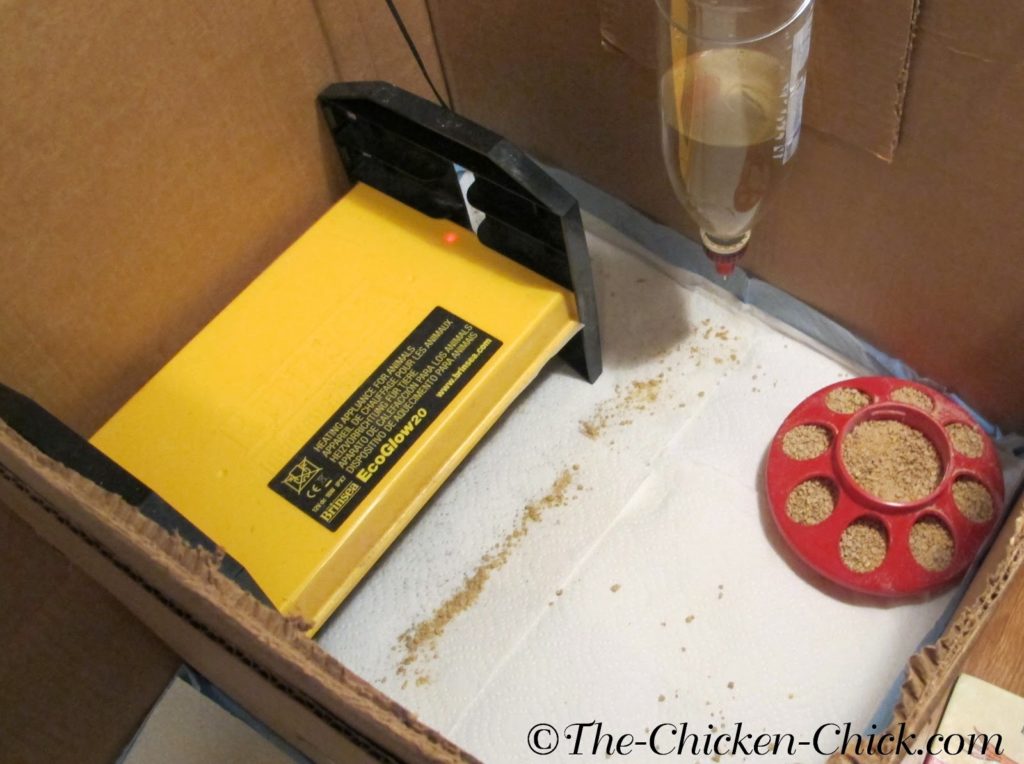
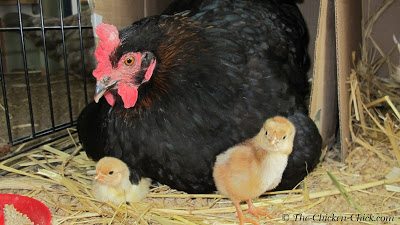
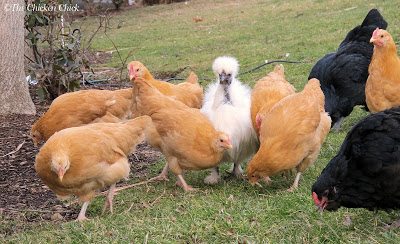


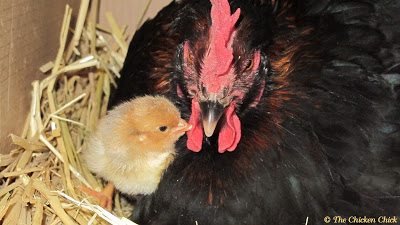
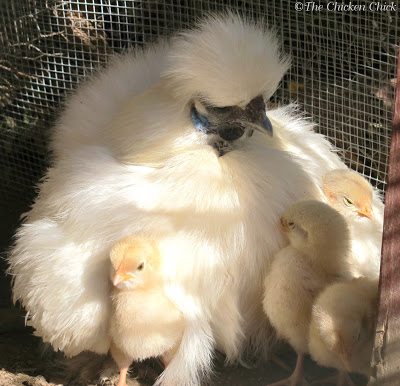
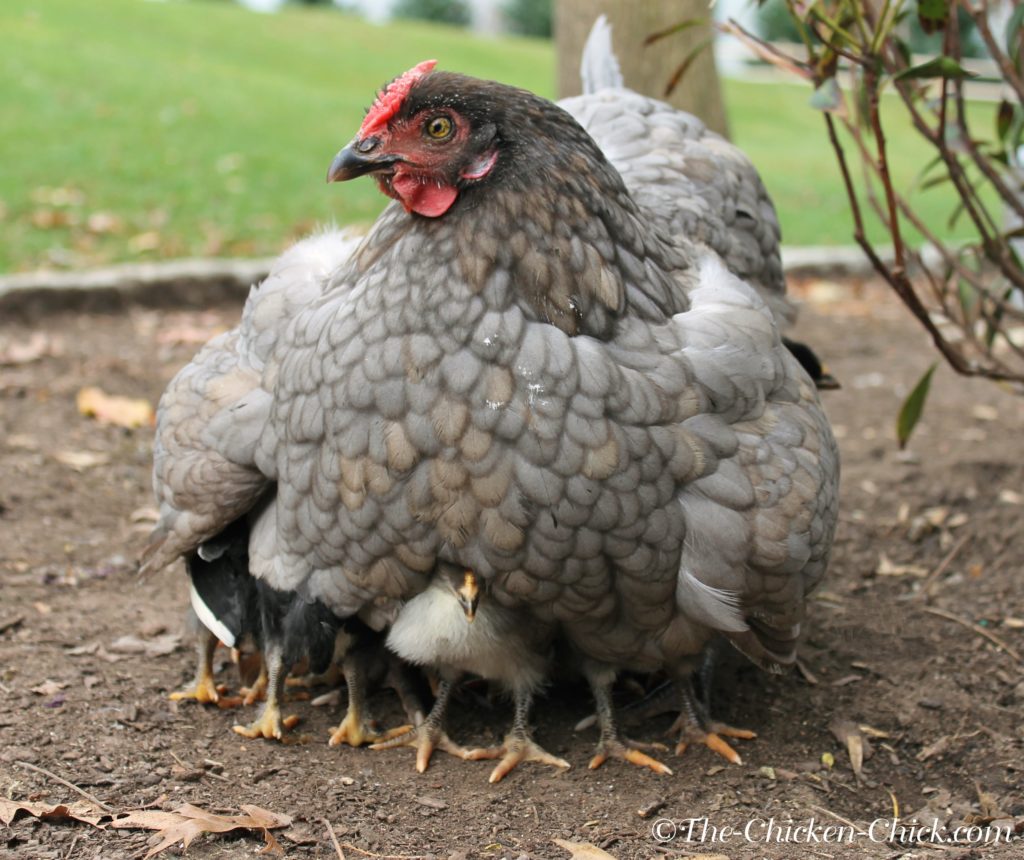
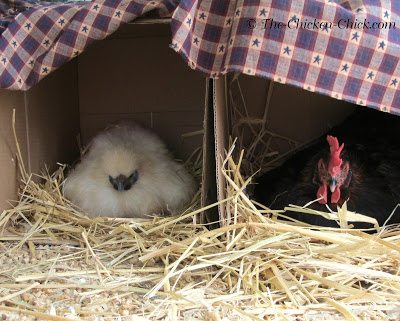
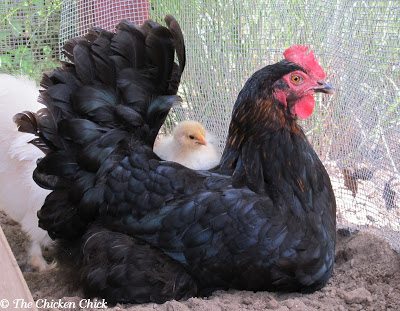
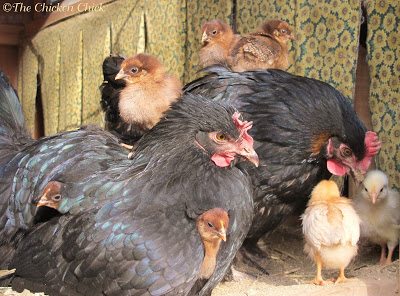
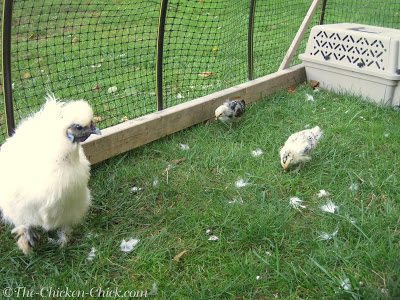
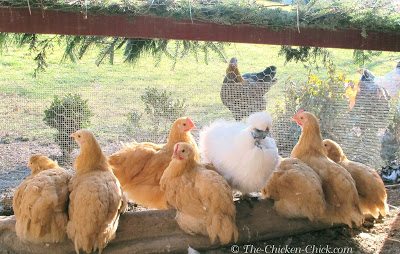
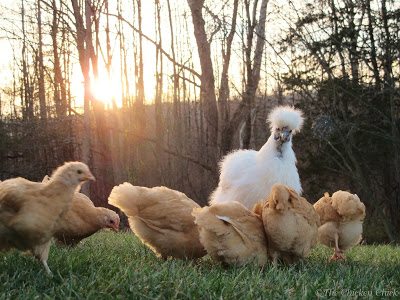
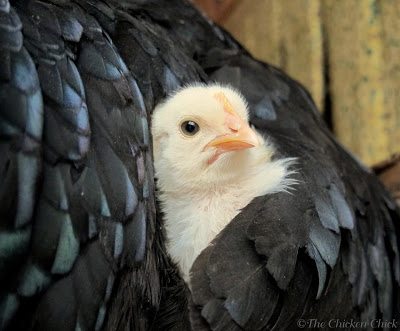
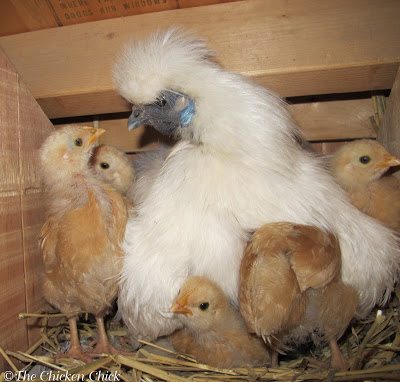


























We had a predator attack while the birds were free ranging and lost two of four hens. One was in the nesting box when I discovered the attack, so she may have been going broody before, but she is definitely all in now. However, I am concerned that perhaps she was injured as when I try to move her off the nest she does vocalize and puff up, but she just sort of plops- won’t walk. I’ve done the best I can to check for injuries and have found none. Comb and wattles have good color. This is day four… Read more »
It doesn’t sound like she’s brooding, it sounds like she was injured. Broody hens WILL WALK when taken off the nest. Broody hens will also LEAVE the nest to eat, drink, dust bathe and poop at least once a day, independently. You are not describing normal broody behavior. She sounds like an injured bird that is trying to be left alone when approached. I strongly suggest bringing her to a vet because it’s likely she is suffering a painful injury that may not be compatible with living a normal life and may need to be euthanized. In any event, if… Read more »
Hi, i moved my hens to safer space on day 17 in the evening and both broody mums didin’t go back on the eggs. It was about an 1.5 hours till i realized and put them all back to their original space. Now the are sitting on the eggs again. I am worried they got to cold and died. Was that to long?
You will have to candle the eggs to see whether the embryos are dead or not.